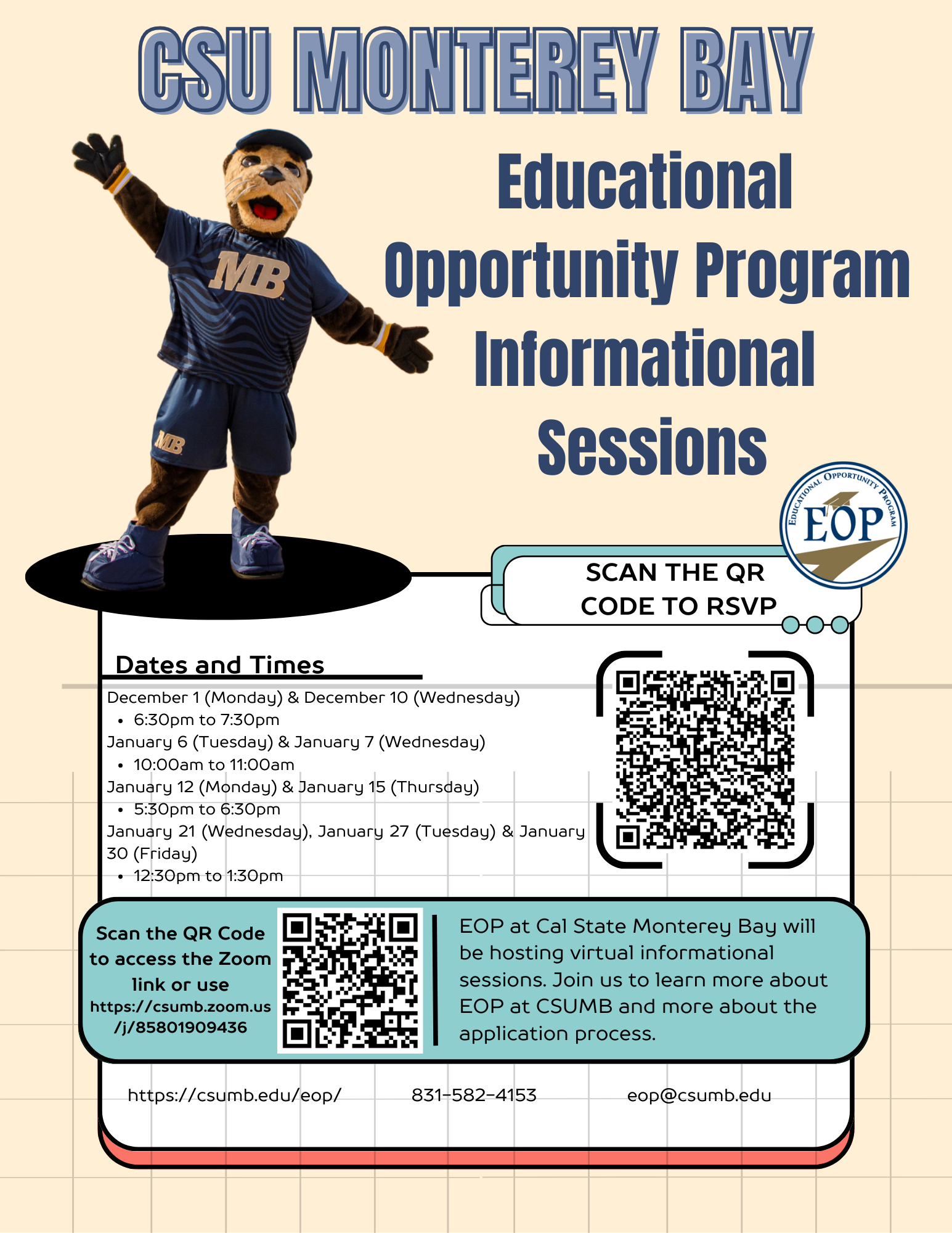Educational Opportunity Program
The Educational Opportunity Program (EOP) helps students who have the potential to succeed in college, but who have not achieved their higher education goals because of their economic and/or educational background.
EOP Mission Statement
The Educational Opportunity Program (EOP) serves as a primary vehicle for the CSU in increasing the access, academic excellence and retention of California’s historically underserved students (low income, first generation), thus working in the spirit and abiding by the legislative intent that originally established the program in 1969 and maintaining the innovation inherent in the program.
How does EOP help you achieve success?
- ACCESS opportunities for historically underserved students (low income, first-generation) by making higher education a possibility for prospective students with the potential for academic excellence.
- ADVOCACY and education to address the needs of EOP students.
- TRANSITIONAL EXPERIENCE that will empower students to better manage and navigate the college experience.
- SUPPORT SERVICES to facilitate student success.
- EOP GRANTS to eligible students who should also receive the highest priority for financial aid resources available from the institution.
EOP Application Questions?
Connect with our Admissions & Retention Advisor for personalized assistance. Click on this link for application assistance resources or to schedule a time to meet and discuss any questions you may have about your current or future application.
EOP Informational Sessions
Applying to CSUMB for Fall 2026?
EOP at CSUMB is hosting virtual information sessions! Join us to learn more about the Educational Opportunity Program, the benefits of being an EOP student, and get step-by-step guidance on the application process.
Dates and Times:
- October 14 (Tuesday) & 29 (Wednesday), 2025 | 7:00 p.m. to 8:00 p.m..
- November 6 (Thursday) & 17 (Monday), 2025 | 5:30 p.m. to 6:15 p.m.
- December 1 (Monday) & 10 (Wednesday), 2025 | 6:30 p.m. to 7:30 p.m.
- January 6 (Tuesday) & 7 (Wednesday), 2026 | 10:00 a.m. to 11:00 a.m.
- January 12 (Monday) & 15 (Thursday), 2026 | 5:30 p.m. to 6:30 p.m.
- January 21 (Wednesday), 27 (Tuesday) & 30 (Friday), 2026 | 12:30 p.m. to 1:30 p.m.

EOP Application Questions? Join Our Live Zoom Office Hours!
Connect with our Admissions & Retention Advisor during our Zoom drop-in sessions for personalized assistance.
Zoom Office Hours will be available January 5, 2026 through January 30, 2026
*Office hours will be unavailable December 22 through January 4 in observance of Winter Break
Zoom Office Hours Schedule:
- Mondays: 3:00 p.m. to 5:00 p.m.
- Wednesdays: 3:00 p.m. to 5:00 p.m.
- Fridays: 10:00 a.m. to 1:00 p.m.
Can't make it during these times? Email us at eop@csumb.edu to arrange an alternative meeting.
Group Presentation Request
Our staff is available to present via Zoom. Presentations take between 30-45 minutes. Requests must be received 2 weeks in advance to be considered. After your request is received, we will send you an email confirmation. We will try our best to accommodate your preferred date and time. If you have specific questions regarding EOP presentations, please email us at eop@csumb.edu.
Contact Educational Opportunity Program
Phone: 831-582-4153
Email: Send an email
Building: 5283 Sixth Avenue, Bldg 47, Seaside, CA 93955
Office Hours: Monday- Friday 8 a.m. - 5 p.m.